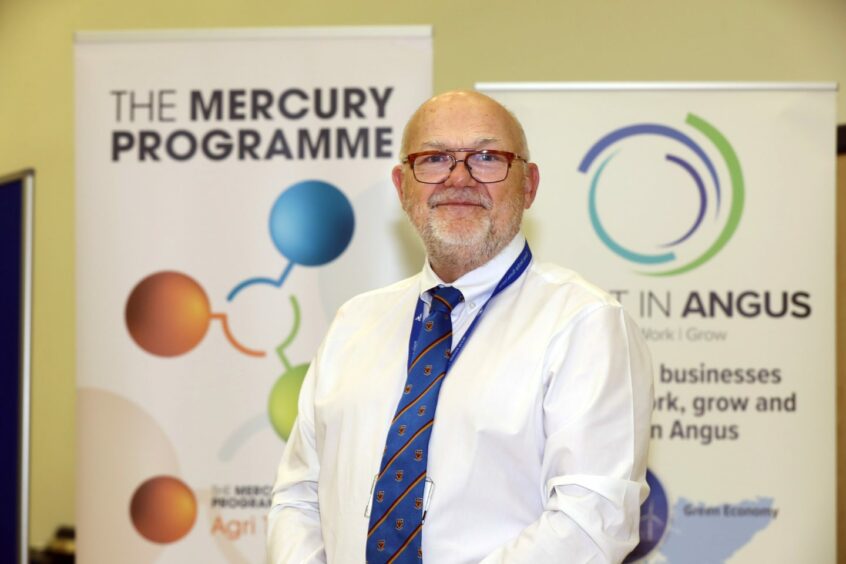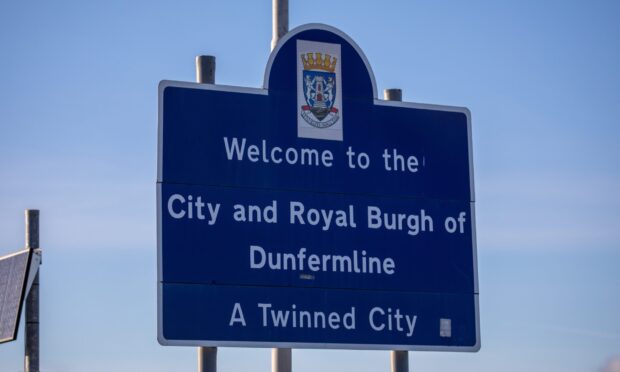A90 commuters travelling between Aberdeen and Dundee could one day be fuelling up with hydrogen at this Brechin hub.
Eco-friendly travel often involves electric cars, cycling and walking, but there is another key player on the scene: hydrogen.
The Angus Rural Mobility Hub – or Arm Hub for short – will support the region’s transition to greener ways of getting about.
That means less petrol and diesel cars, and a move towards electric cars.
The hub will also promote car sharing, and clean fuels like biogas and hydrogen.
How will the hub impact A90 commuters?
Angus Council and Dalhousie Estates are working together on a proposal for a 40-acre green transport hub in the heart of Angus.
Archie Bathgate, headteacher of Brechin High, praised the scheme and its potential to reduce emissions on the A90.
He said: “It’s not just putting a few charging points around for people. It will hit HGV traffic on the A90.”
There will be clean re-fuelling at the hub, where HGVs can refill with bio Compressed Natural Gas (CNG) and green hydrogen.
“We’re getting four charging points in the [Brechin Community Campus] car park, and that seems like a drop in the ocean,” Archie admitted.
“But to make an impact on the real diesel traffic that’s driving past this building every day? That’s where we saw the real buy-in.
“It’s about preparing for the future. The young people of today, this is their future.
“I’ve got grandkids now, and I want them growing up in a world that’s still there.”
‘Potential to decarbonise your journey’
Mark Richardson is part of the project team, and represents Dalhousie Estates.
“If we get this right,” he said, “your default will not be to drive in your own car from Aberdeen to Dundee.
“[The hub] has the potential to decarbonise your journey and make a positive contribution to the way you want to travel.
“It’s about providing that infrastructure to enable charging and car sharing, and providing people with options.”
“It’s more than just having a refuelling station for biomethane or hydrogen or rapid EV chargers, good though that is.
“We want what we call an ecosystem.”
‘On-demand’ public transport for rural Angus
This transport “eco-system” will not only provide a greener link along the A90, it will also connect the rural communities in Angus.
“So much of Angus is rural, they face specific challenges around connectivity and access,” Mark said.
“It’s about active travel too, it’s how you integrate that.
“How do you get to the ARM hub, how do you get to where you need to be?
“We’re trying to connect the ARM hub to make sure it is part of an integrated solution.”
It’s that idea of having a much more responsive system […] so you can get from wherever you are to wherever you need to go.”
Mark Richardson, Ristol Consulting
There will be active travel links to and from the hub, so that people in rural areas can get to it.
The project team are also exploring demand responsive transport (DRT).
Mark explained: “The principle is that you should be able to call a bus or van at a time of your choosing in order to get you from A to B in a way that is affordable.
“It’s not a taxi – the idea is that there will be more of a structure and time allocation and they will pick up others.
“It’s that idea of having a much more responsive system […] so you can get from wherever you are to wherever you need to go.”
Could A90 commuters use hydrogen?
Electric cars are often controversial, with drivers holding a range of views on – you guessed it – range.
But the UK Government has vowed to halt the sale of new petrol and diesel cars by 2030, and the Scottish Government has a world leading target of achieving net zero by 2045.
Hydrogen may well be an important tool in Scotland’s arsenal in the fight for this goal.
The Scottish Government’s hydrogen action plan shows that it has the potential to reduce transport emissions and create green jobs.
Mark added: “Clean gas and hydrogen will predominately but not exclusively be for the heavy goods vehicles. Our cars and smaller vans are more likely to be electrified.”
But he said there will be “capacity” for cars to fuel up with hydrogen at the hub.
The hub will be paid for with £3m from the council’s capital budget and £2.9m will come from UK Government’s £26.5 million Angus Fund which is part of the Tay Cities Region Deal.
People can give their views on the proposal here.













Conversation